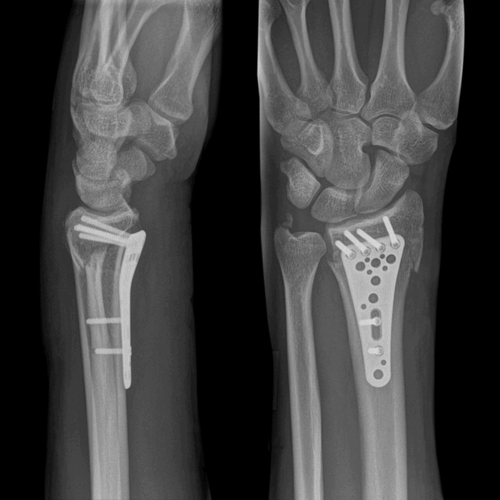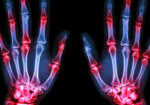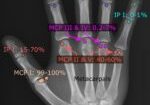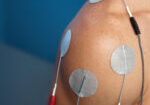An evaluation of wrist and forearm range of motion during purposeful activities and exercises for distal radius fracture
Filed under Reviews
An evaluation of wrist and forearm movement during purposeful activities and range of movement exercises after surgical repair of a distal radius fracture: A randomized crossover study
Collis, J., Mayland, E., Wright-St Clair, V., Rashid, U., Kayes, N., & Signal, N. 2022. An evaluation of wrist and forearm movement during purposeful activities and range of movement exercises after surgical repair of a distal radius fracture: A randomized crossover study, Journal of Hand Therapy, https://doi.org/10.1016/j.jht.2022.07.009
The Skinny
This study investigated how range of motion exercises compared to purposeful activities impact rehabilitation of postoperative distal radius fractures and the movement patterns of the wrist each of the interventions produces.

In the Weeds
Thirty-five adults with a surgical repair of a distal radius fracture participated in two ten-minute intervention sessions, including range of motion exercises and meaningful activities that each participant chose the previous day. Electrogoniometers were used to measure four different movement patterns of the wrist during the interventions. These included accumulated joint position over time, maximum active end range, numbers of repetitions, and excursions beyond 75% of available ROM and percentage of active movement time.

Bringing it Home
The purposeful activities required more repetitions, time of movement, and range of movement when compared to range of motion exercises only. The range of motion exercises was significant in providing more accumulation of joint position and end range of movement with supination. These findings suggest that along with other psychosocial benefits of purposeful activities used as therapeutic interventions, these activities also require the affected wrist to move in greater ranges of motion for a longer amount of time, which increases the repetition of wrist movement. This is important for the beginning phases of postoperative rehabilitation for distal radius fractures.
Rating
⅘
Due to the study’s small sample size, the evidence cannot be generalizable. However, this study provided helpful insight for hand therapists to incorporate purposeful and meaningful activities into treatment for the commonly seen diagnosis of distal radius fractures. This article also encourages more research to be done regarding purposeful activities in hand therapy practice.
More To Read
Conservative Therapy for OA in the Fingers: A Literature Review
Beasley, J., Ward, L., Knipper-Fisher, K., Hughes, K., Lunsford, D., & Leiras, C. (2018). Conservative therapeutic interventions for osteoarthritic finger joints: A systematic review. Journal of Hand Therapy, 32. 153-164. The Skinny – The article reviews the evidence on the effectiveness of conservative treatment for those who experience osteoarthritis in fingers and in their finger…
Read MoreArthrodesis vs Arthroplasty in Thumb CMC OA
Piacenza A, Vittonetto D, Rossello MI, Testa M. Arthrodesis Versus Arthroplasty in Thumb Carpometacarpal Osteoarthritis: Impact on Maximal Voluntary Force, Endurance, and Accuracy of Pinch. J Hand Surg Am. 2021 May 24:S0363-5023(21)00199-4. doi: 10.1016/j.jhsa.2021.03.023. Epub ahead of print. PMID: 34045112. The Skinny: This was a retrospective study based on a convenience sample of individuals who…
Read MoreSesamoid Bones: What are they and what do they do?
By Brittany Carrie A Student’s Perspective During the first few weeks of my rotation, I was exposed to many new and exciting things that I had not been exposed to in the classroom setting. I observed and helped treat patients who had undergone severe trauma from lacerating tendons to complete amputations, saw different splinting techniques,…
Read MoreThe Use of Neuromuscular Electrical Stimulation with Upper Extremity Paralysis
The Use of Neuromuscular Electrical Stimulation with Upper Extremity Paralysis By: Mikayla Murphy Martin, R., Johnston, K., & Sadowsky, C. (2012). Neuromuscular electrical stimulation–assisted grasp training and restoration of function in the tetraplegic hand: A case series. The American Journal of Occupational Therapy, 66(4), 471-477. https://doi.org/10.5014/ajot.2012.003004 The Skinny The purpose of the study was to…
Read MoreSign-up to Get Updates Straight to Your Inbox!
Sign up with us and we will send you regular blog posts on everything hand therapy, notices every time we upload new videos and tutorials, along with handout, protocols, and other useful information.






